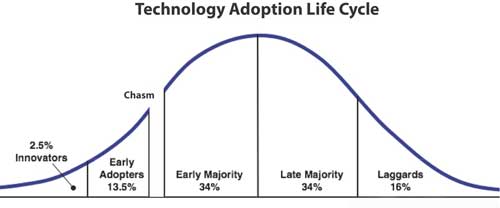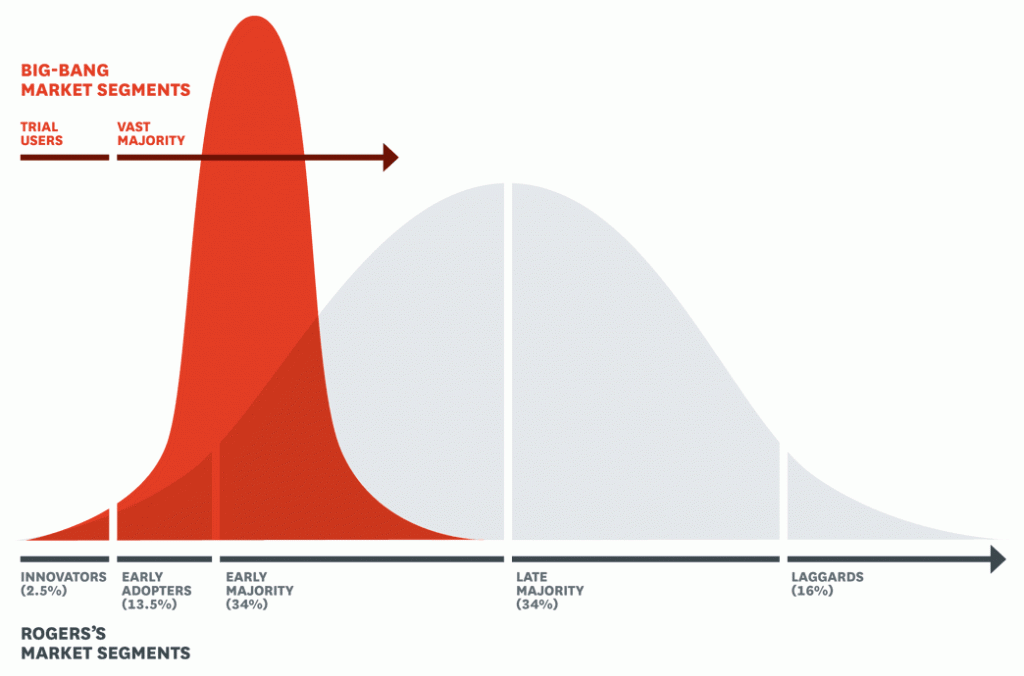Big Bang Disruption, an article recently in the Harvard Business Review, builds upon Everett Rogers classic customer adoption model and Geoffrey Moore’s “Crossing the Chasm”. Specifically, the previous model looks like this:

And the new model looks like this:

The authors describe three devastating features of big bang disrupters:
Unencumbered Development
As disruptive technologies become cheaper to manufacture and deploy, innovators can experiment with new applications at little risk to investors, abandoning prototypes that do not quickly prove popular… In the bizarro world of big-bang disrupters, it is perfectly rational to churn out dozens of new products and see which ones take hold. Like venture capital investments, most will fail outright. But just one success can pay off big.
If a big industry used to have a few, well-funded companies chipping away at their market every year, now, there are tens of thousands of innovators leasing equipment in the cloud, trying out ideas relentlessly, chipping away at their market. Eventually, some of those ideas take hold and grow viraly.
Unconstrained Growth
Big-bang disruptions collapse the product life cycle we know…Now there are only two segments: trial users, who often participate in product development, and everyone else. The adoption curve has become something closer to a straight line that heads up and then falls rapidly when saturation is reached or a new disruption appears.
The new product cycle is much faster, consisting of development, deployment, and replacement: It’s like a battlefield, where near misses signal not that your enemies are confused or incapable of hitting you but that they are zeroing in on your position—walking their fire onto the target, shell by shell—before unloading a full barrage on your exact location.
Undisciplined strategy
Big-bang disrupters contradict everything you know about competitive strategy… businesses should align strategic goals along one—and only one—of three value disciplines: low cost (“operational excellence”), constant innovation (“product leadership”), or customized offerings (“customer intimacy”). Failing to choose, said the authors, meant “ending up in a muddle.”… Big-bang disrupters, however, are thoroughly undisciplined. They start life with better performance at a lower price and greater customization. They compete with mainstream products on all three value disciplines right from the start.
With technology, a company can make a superior product, at a lower cost, with more customization. It’s possible to sell to consumers a product that is better in every way. Are you an entrepreneur thinking about disrupting a current industry? Have you imagined that you could be making a product that is cheaper, better, and more customized? Are you a manager in an industry and you believe these things are impossible? It’s time to familiarize yourself with Big Bang Disruption. Check out the full article on HBR, but if you hit their paywall, check out this version the authors made available on PDF via Accenture.




